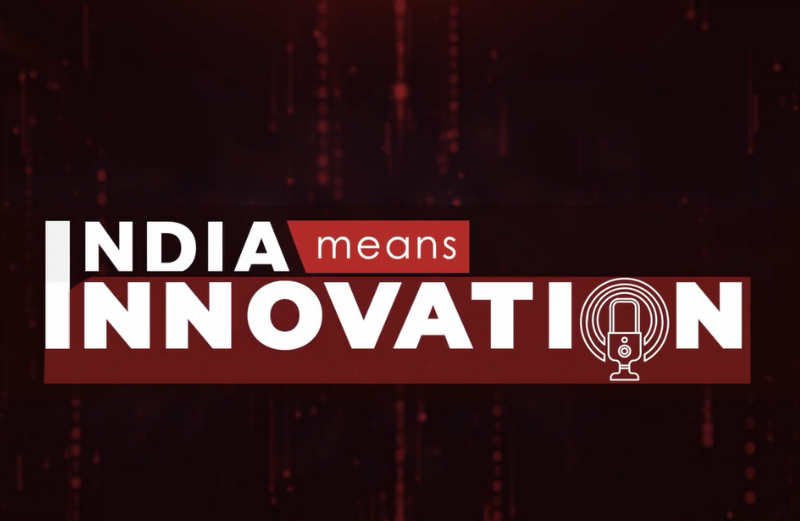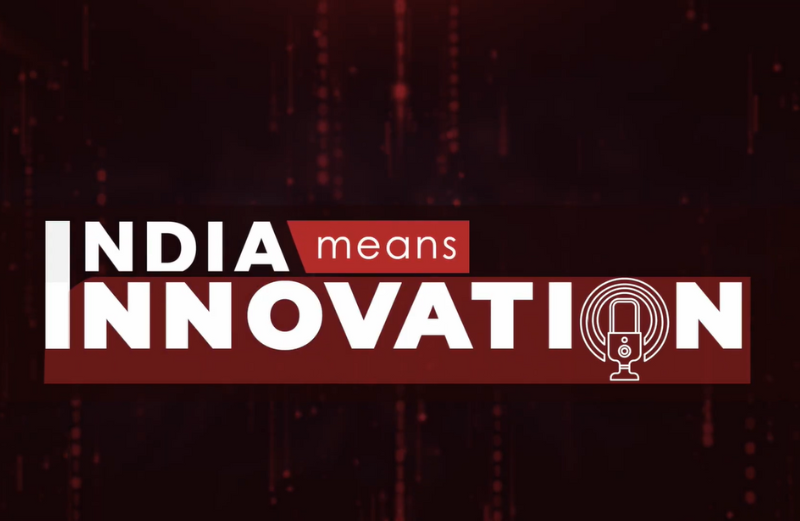Transcript Disclaimer: This transcript has been generated using automated tools and reviewed by a human. However, some errors may still be present. For complete accuracy, please refer to the original audio.
00:00:00 GOVINDRAJ ETHIRAJ
Thank you so much for joining me Vijayakumar. So, you know, when you first heard about ChatGPT, you know, was it fear or joy? What was your first instinctive, intuitive response?
00:00:18 C VIJAYAKUMAR
Thank you for this session. And I think first question or the thought was curiosity. Right. And when I kind of used it, it was definitely a happy, joyous type of reaction because it's simple to use. You can get initially whatever we could see was it really was very good. That was a very positive thing, I would say.
00:00:46 GOVINDRAJ ETHIRAJ
And as you started thinking about how it would flow down your enterprise HCL tech in this case, what were the next thoughts?
00:00:52 C VIJAYAKUMAR
Yeah, I think while ChatGPT might have got all the attention around generative AI, if you look at some of the technologies preceding it, right, like GitHub Copilot was being used for software development even three, four years ago. Right. Even before ChatGPT came in. So we had invested significantly to see how AI can be used in the software development life cycle. So it was really a very familiar theme where how can you now leverage generative AI to further this whole software development paradigm? So I personally saw it like a big opportunity because if you had a little bit of a head start and if you're trying to be very proactive in leveraging this technology, we could create distinctive kind of propositions. That's how I saw it.
00:01:46 GOVINDRAJ ETHIRAJ
And when we talk about human centrism, and firstly, why are we talking about human centrism today? And if that is an issue, how is it dealing with the larger sort of pursuit of efficiency in technology?
00:01:59 C VIJAYAKUMAR
I think I would say it's more than human centric. I think the technology is really amplifying the human potential. That's the way we should look at. Right. If you can become more productive, it just frees up a lot of your time and your cognitive capacity to do something which is much more valuable. I think if you kind of approach all this with that paradigm, first recognize that it is going to increase productivity significantly, then say that the increased productivity, how can I leverage that human capital that is getting released to create new value? I think if you approach it like this, you, you will really come up with different answers on how to kind of leverage the human capital that gets unlocked due to the productivity.
00:02:45 GOVINDRAJ ETHIRAJ
So can you illustrate that?
00:02:46 C VIJAYAKUMAR
Yeah, today I think the services industry is largely focused on a lot of input metrics and over the last maybe a decade or so we've moved more to output. But I think eventually we need to transition from largely an input centric model to more output and outcome centric. Like can you create a product for a company, one of your clients, and you don't charge anything for that product, but you get paid based on how successful the product is in the market. So I think that kind of mindset will change the current services model because current services model is largely last 30 years the industry has grown very linearly with people growth and associated revenue growth. And now is the moment the decoupling should happen. We are already seeing the decoupling and that means more outcome centric, more people based services, more platform based services from just services. It's more IP and services. So I think these are some of the shifts that we need to make. It's not that it's completely new already. A lot of industry has some segment of their business in this model, but we need to really amplify that and.
00:04:07 GOVINDRAJ ETHIRAJ
What is propelling it right now, as in if you're saying there is a linear shift towards, it's the productivity unlock.
00:04:14 C VIJAYAKUMAR
That generative AI is able to do, whether it is software development. We think there is 20 to 30% productivity improvement possible in the entire end to end life cycle of software development. So we built a platform called AI Force which uses some of the traditional available language models, but it really covers the end to end lifecycle of software development. It's just not coding, it's design, it's deployment, it's support, all of that. And like if you want to make a change to an existing software, right? To make a change, impact analysis, depending on what the change is, sometimes it might take three, four weeks for an engineer to come up with or a team to come up with. These are the changes. But with generative AI you can get that output in less than half an hour. Right. So that is the kind of change which is unlocked.
00:05:06 GOVINDRAJ ETHIRAJ
So if I can ask you to illustrate once again, so let's say you were working for a big bank or a retail chain. What's the kind of problem that they would have given you 10 years ago and how would that get solved right through the stream? And how would you do it differently or rather how would it be done today, which reflects the productivity savings and everything that you're talking about?
00:05:25 C VIJAYAKUMAR
Yeah, a good example would be like a financial services firm where we are part of a very large transformation program. The client is spending almost a billion dollars a year and it's a five year transformation program. And we probably in the second year now with generative AI we have showcased in certain segment, how can the entire program be done in 30% lesser time. So the five year program can be done in four years, which is of course a billion dollar plus saving. But more important is the time to market. If you're able to get those features, capabilities, if you can launch the modernized platform one year ahead of time, then it's a huge business value that gets created. So I think these are the conversations which we are having and it's fundamentally different. And how can you lead these conversations with clients to showcase that you can do something much faster, that will create faster time to market? And those are the types.
00:06:28 GOVINDRAJ ETHIRAJ
So a lot of this is still rolling out. So are you able to predict sort of substantively that this is the cost saving I will be able to bring in time, for example?
00:06:40 C VIJAYAKUMAR
Yeah. So it's an iterative process. So we constantly engage with our customers by what we call as art of the possible. Right. So while a study that is done in a limited way demonstrates that you can do things faster, it does not mean that the entire thing can be done. So you will have to onboard the client with client also should be willing to walk the path with you. You kind of define an art of the possible, walk the path with the client. There will be some changes in the way and as long as you have a good understanding with the client that it means a new technology, it's a change management is very, very, very significant in this. So you need clients cooperation and full involvement to make this happen. So you really have to onboard the client in this journey and then the outcome that you get out of this journey can be shared, the value can be shared.
00:07:36 GOVINDRAJ ETHIRAJ
So when you talked about the art of the possible, so what is possible today in a way that you could define it for people who will be watching this and what is not possible today?
00:07:45 C VIJAYAKUMAR
I think all productivity unlock is still happening with human in the loop. Right? I think it's not. I do not foresee that a lot of this can be done completely independent of humans. I think that's probably a little bit of misconception which we need to kind of deal with. But the involvement of humans could be much lesser. Somebody who's used to developing code now needs to validate code. But that does not mean that programming concepts, the basics that are not required. I mean, that's a misconception, right? You can do everything through generative AI, but you still need very strong programming concepts to be a good developer to deliver a good quality code. You still need to understand the architecture. Now how do you kind of break that work into smaller pieces which you can do much faster just developing the code through. Right. Prompting you can do much faster. So I think it's not that everything is getting replaced. A lot of fundamentals remain the same. But how can you do things faster in certain segments using technology?
00:09:01 GOVINDRAJ ETHIRAJ
And when you talk to clients today, how are they defining their expectations? And now this is more of a market question. So let's say the marketplace today is also unpredictable. It always was. But maybe in some areas, let's say because of geopolitical reasons or something, there are more elements or layers of unpredictability. So what are they asking?
00:09:18 C VIJAYAKUMAR
The reaction from clients are very mature because they also understand the technology is new. A lot of things are changing very rapidly. So I think the overwhelming kind of conversation is let's do this together, right? Let's look at the art of the possible together. And it has a lot of dependence on the client. Everything cannot be just done by us because the change management aspect is very big. Do we do carrot and steak or more carrot? What kind of approach you want to follow is something which you have to agree with the client and that's gives you the right roadmap. And it's not that clients have some unreasonable expectations, but you just need to keep an open mind that you can have some very different outcomes, very different levels of productivity and really jointly go after it. That's the journey. We are working with a lot of clients, right?
00:10:15 GOVINDRAJ ETHIRAJ
And as you do that, do you see clients, for example, again at this point of time coming, saying that, okay, this is my transformation story and you're working with me on that, but I want you to tell me how cocoa prices are going to move or how am I going to get more customers in this particular store or something which is more fundamental to predicting what their future looks like.
00:10:39 C VIJAYAKUMAR
So I think the biggest difference is this technology is very democratic, it's available to everybody. Right? So I think that makes it. The client can do a lot of this themselves. I mean, the business person who is dealing with the supply chain can use the right models, but we have to help them create an industry specific model. It could be a small language model. It could be just customizing or building some features which leverages these applications, which uses this language model in the software application. So we can help them in that dimension. But how do you get value out of it? The real subject matter expert in a client or in our organization in the domains they will really be the people who can unlock more value.
00:11:31 GOVINDRAJ ETHIRAJ
And when you talk about building these small language model solutions or large language, I mean, are you seeing a lot of that right now?
00:11:38 C VIJAYAKUMAR
Yes, of Course there are many large language models, many open source models, but again, you don't need the large language models for everything. You can simplify it substantially with a much lower compute and with better speed in a small language model. So different industries are looking at creating small language models and embedding these small language models as a part of their applications or the data lake and things like that. I think that's the interesting part of the work that's coming away.
00:12:16 GOVINDRAJ ETHIRAJ
And since you talked about compute and how do you see deepseek's role in all of this?
00:12:21 C VIJAYAKUMAR
Yeah, of course it is dramatically more, I mean it's about 20 times less compute intensive and the world has wakened up to it a little late though it was launched in December. I think it also showed how serious people are about their holidays. Nobody realized it till the whatever end of January, something like that. So. But I still think there are, it's not a perfect answer to everything. I mean, Deep SEQ has got a lot of biases. It's very evident. Maybe in the initial euphoria was there, but today there is a lot of bias. So there are different firms which are forking the Deep SEQ algorithms, the simplification of the architecture and introducing the same simplification in the other language models. So it's going to evolve much faster. And I'm sure there are at least 10 equivalents of deep SEQ which are already created, launched, which might be just leveraging all the architectural changes that Deep SEQ did in the language models that was already there.
00:13:26 GOVINDRAJ ETHIRAJ
So let me ask a two part question. One is what is the moral of the story in this whole Deep SEQ thing that you took away or take away either as an individual or as a company? And the second part is, how do you see it from an India standpoint? I know you're not here all the time, but nevertheless, no, I think there.
00:13:40 C VIJAYAKUMAR
Is a very important learning. I think frugal innovation, I think was really proved at a huge scale and I think India has this inherent DNA to innovate in a frugal way. So I think it's a great example for us to learn from as well.
00:13:58 GOVINDRAJ ETHIRAJ
And how would we do that? I mean, what is the aspect of this whole thing that we can take?
00:14:02 C VIJAYAKUMAR
No, I think there are two views. I mean there's a view that you don't necessarily need to build our own models, but I'm of the view that we should invest in building models which are India specific. I'm sure there is work that government is doing. There is Private public partnerships. Because eventually AI is becoming like a big power that countries can have. Right? So it might be an open source, Lama could be an open source, Deep Seq is an open source. But will it be like that forever? If this becomes the biggest battleground, then would countries not get a lot more, I mean, protective about leveraging their technology in other locations? So I think if you want to create a long term competitive advantage, we should continue to invest and build our own models.
00:15:00 GOVINDRAJ ETHIRAJ
Got it. So if I were to ask you for two or three wish list points which using AI or using advanced technology to solve problems at an enterprise level or enterprise for customers, what would they be and what's on your mind?
00:15:14 C VIJAYAKUMAR
I think it's today I think we need a lot of cognitive energy of people is going and doing lot of routine things. If you even take any executive like a CEO for example, do we really need to do all those things or can that be done with? Everyone can build a small generative AI assistance and keep teaching it. Today you may be doing a podcast with me, but you have a knowledge base. Over the last many years, maybe all the knowledge that you've read, books that you've read, podcast that you've listened, they can all be taught to an assistant. And that makes you a lot more productive. It makes me as a CEO a lot more productive. Maybe I can do my job without having to spend the long hours. I can do it in much shorter time. And I think it's a good, it does help you to build a better work life balance.
00:16:12 GOVINDRAJ ETHIRAJ
So you've been CEO for nine years at hcl, which is a long stint. How has your world and worldview changed in the context of technology and what we're talking about today between, let's say about eight or nine years ago and today, including the time that you use and how you use it?
00:16:28 C VIJAYAKUMAR
Yeah, I mean today we are a lot more technology dependent and like I think there was a time when we used to review a lot of spreadsheets, a lot of PowerPoints, whereas today it's different. You have different types of dashboards, you can consume things much faster, you don't really need someone to send you reports. You can kind of configure whatever way you want. So you become much more adept in using technology to kind of solve a lot of your challenges.
00:16:58 GOVINDRAJ ETHIRAJ
And these are to do with let's say information that's coming up, okay, so and presenting it or the cockpit view. What's not changed?
00:17:07 C VIJAYAKUMAR
I think the most important thing that has not changed is your ability to deal with people, right? I mean, people are people. I don't think the emotional aspects, the empathy aspects has changed. I mean, that will remain probably for perpetuity, and that remains the same.
00:17:26 GOVINDRAJ ETHIRAJ
CVK, pleasure talking to you. Thank you so much.
00:17:28 C VIJAYAKUMAR
Thank you, thank you.






















